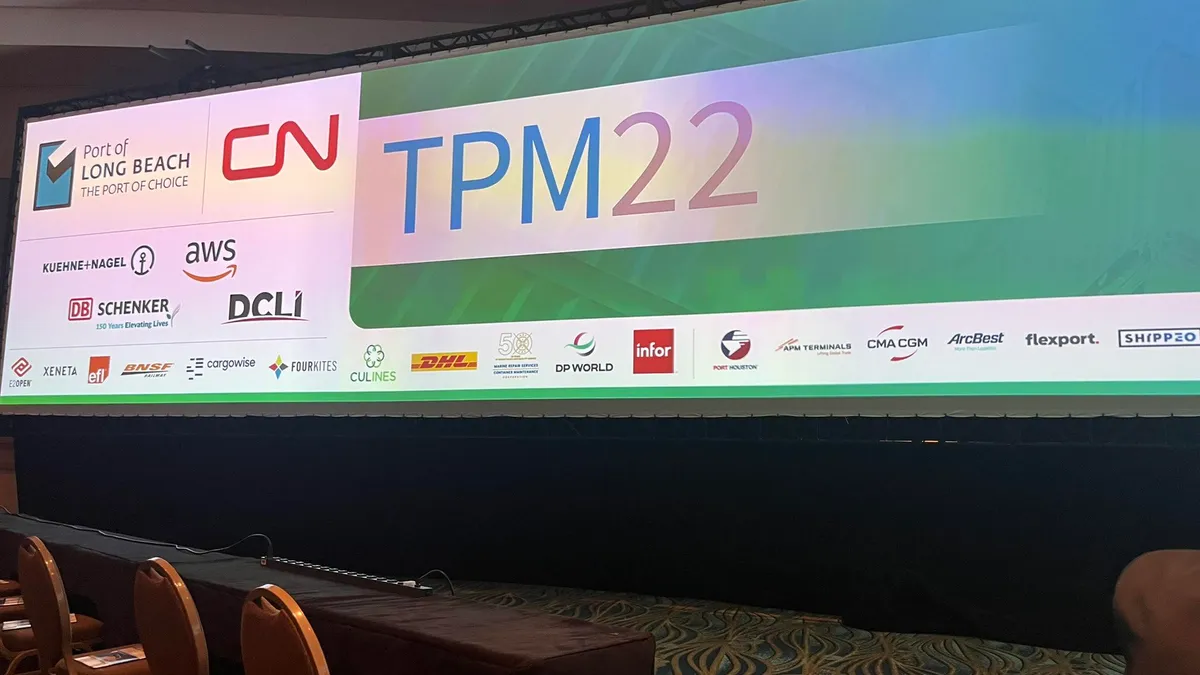Dive Brief:
- Shippers should expect no relief for the rest of 2022 as many structural issues in ocean transportation have yet to be solved, experts at the TPM22 and TPMTech Conference, produced by The Journal of Commerce in Long Beach, California.
- "We don’t see the tide turn in 2022," said Thorsten Meincke, board member for ocean and air freight at DB Schenker. Meincke said infrastructure problems, labor constraints, high demand and reduced capacity will continue to trouble the market.
- Vessel delays will also remain a challenge for shippers. "Every ship is full. And there's no ship ready to come on the next voyage. So I think that goes on for a while," said Ronald Widdows, CEO of FlexiVan Leasing.
Dive Insight:
After almost two years into the pandemic, shippers want to see relief in 2022. First COVID-19 emerged, then came unexpected variants, and now there is a risk of global disruption following Russia's invasion of Ukraine.
Stakeholders in the industry don't see much relief coming for shippers anytime soon. "It will not get better and 2023 will be worse," said Meincke.
Others think it's not a U.S.-only problem but a global one.
"This is just a symptom of a bigger problem that is global that affects origin ports in Asia, and that's probably going to continue so I think we're gonna see more waves," said Widdows. "It gets better a little bit then 'Here they come again.'"
Knowing when or where the next disruption will come is difficult to predict. Conference panelists mentioned Russia's invasion of Ukraine and upcoming contract negotiations between marine terminal operators and labor unions as risks to watch.
In the meantime, as a lack of space for ships at West Coast ports extends berth times and container dwell times, some shippers are turning to East Coast trade lanes, according to data from Sea-Intelligence.
"There is a 60% increase in the number of vessels on the Asia-North America East Coast trade lane in the coming months," Alan Murphy, CEO of Sea-Intelligence said in a February press release.
Editor's note: This story was first published in our Logistics Weekly newsletter. Sign up here.













